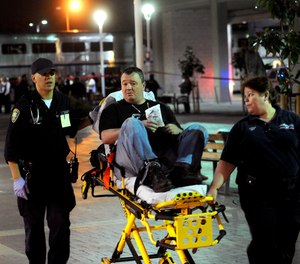
Exploring non-affiliated emergency medical services eligibility for Assistance to Firefighters Grants
By EMSGrantsHelp Staff
The Assistance to Firefighters Grant (AFG), currently administered by the Federal Emergency Management, provides federal funding opportunities to local fire departments and non-affiliated emergency medical services. The funding supports organizations by addressing a lack of equipment and implementing training.
AFG allocates funding towards career, volunteer, combination and paid -on-call fire departments that serve primarily urban, suburban and rural areas. While FY18 awards were recently announced in September 2019, the expected opening dates for the FY19 AFG application has yet to be announced. However, as announced in the FEMA GO Portal webinars and training, AFG FY19 is expected to be released by the end of 2019. However, if your department or agency is interested in applying, now is the time to prepare!
Below is a breakdown of eligible EMS projects and later a discussion on what you and your department/agency can do to get ready to apply.
The previous year’s AFG Notice of Funding Opportunity (NOFO) states that non-affiliated EMS organizations – public or private nonprofit emergency medical service entities providing medical transport that are not affiliated with a hospital, as well as do not serve a geographic area in which emergency medical services are not affiliated with a hospital, are eligible to apply. A non-affiliated EMS organization, “in any of the 50 states, as well as the District of Columbia, the Commonwealth of the Northern Mariana Islands, the U.S. Virgin Islands, Guam, American Samoa, the Commonwealth of Puerto Rico, or any federally recognized Indian tribe or tribal organization are eligible to apply.”
When applying to AFG and determining your project focus, it is also important to consider the FEMA designated priority levels, which can be found within the NOFO. For instance, high-priority items are more commonly funded than low- to medium-priority levels.
AFG projects include:
Also, it is important to keep in mind that nonaffiliated EMS vehicle drivers or operators must be trained to the National Standard Emergency Vehicle Operator Curriculum (EVOC) or a training program must be in place by the time the awarded vehicle is delivered.
As you prepare for AFG, there are potential best practices that can be implemented to ensure that the application submitted has been drafted to the best of its ability.
Additionally, other valuable information includes gathering budget information; any prior successes or failures the department has faced, and how funding could potentially address those issues. Information that has been gathered and is up to date will ideally provide for a smooth transition into the process of drafting a successful grant proposal that can potentially fund the project of a deserving department, agency, and community.
Copyright © 2024 EmsGrantsHelp.com. All rights reserved.
